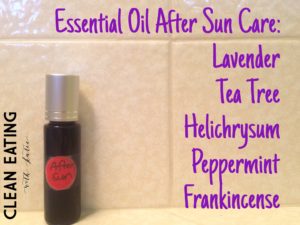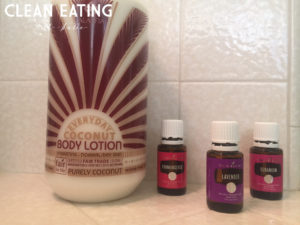Hey Oily friends!
While on vacation in Cabo San Lucas a few months back, I got a bit too much sun. Uh-oh!
While my goals are always to get a healthy amount of safe sun exposure so that I can make vitamin D, I also try to avoid getting too much sun. I usually try to stay in shaded areas as much as possible and then apply sunscreen when I can’t avoid the sun. Everyone has a system that works for them, and this works for me. Well most of the time. [Insert guilty face here ;-).]
I researched oils to help with my sunburn and luckily enough I had brought some oil blends with me on vacation that would help with After Sun Care. In my daily moisturizer I had frankincense, lavender, geranium, and tea tree. And in my radiation blend were oils, that, Duh!, help with burns. (I rub this blend on my skin that has gone through radiation treatment and after all, radiation is essentially a sunburn to the deeper tissues.) My radiation blend has: melaleuca quinquenervia, melrose, German chamomile, lavender, and coconut oil (and it would have Roman chamomile if it was ever it stock!). I applied the lotion and the radiation blend to the sunburned areas and within a day, I was back on track. The skin wasn’t red or irritated and it healed really well. And an obvious bonus here: there wasn’t any “junk” in my after sun care!
Fast forward to present day. This past weekend, while training for my Avon 39 Mile walk, I thought I put on enough sunscreen, but there was one part of my shoulder that still got sunburned. Since I am home and have access to all my oils, I didn’t have to improvise. I made an After Sun Care Rollerball and my sunburn is loving it!

I added about 10 drops of lavender, tea tree, and helichrysum and then about 7-8 drops of peppermint and frankincense. I filled the rest of the rollerball up with coconut oil.
I have been applying the blend at least twice per day. The sunburn is fading and the skin is feeling much less irritated.
As always, be sure to test these oils before using them on a sunburn.
Have you used any oils for After Sun Care? What are your successes?
Happy SUMMER!
Hugs & Health <3,
Katie



 ition to avoiding the artificial junk, I wanted to start trying out oils that can support healthy skin.
ition to avoiding the artificial junk, I wanted to start trying out oils that can support healthy skin.

 I originally wrote this as a handout for my
I originally wrote this as a handout for my  option the best because the clothes smell great and very little waste is produced. And not much static either! Have you gone dryer sheet free?
option the best because the clothes smell great and very little waste is produced. And not much static either! Have you gone dryer sheet free?